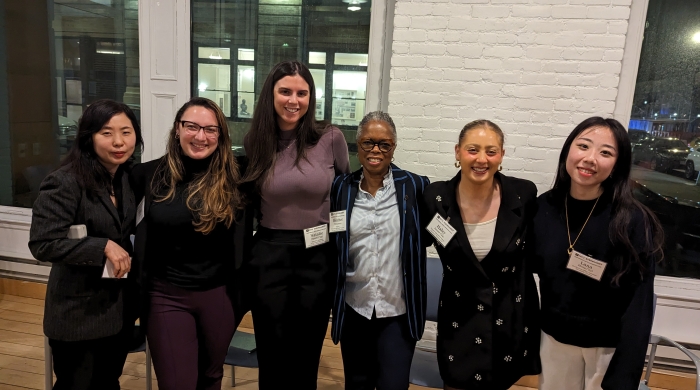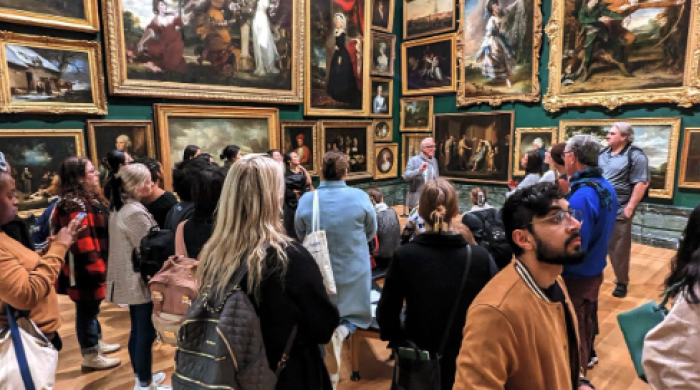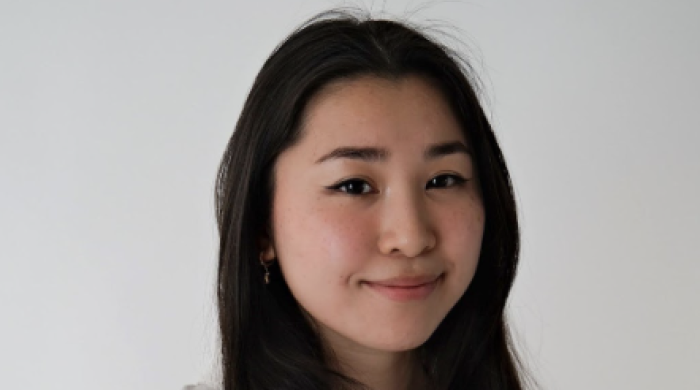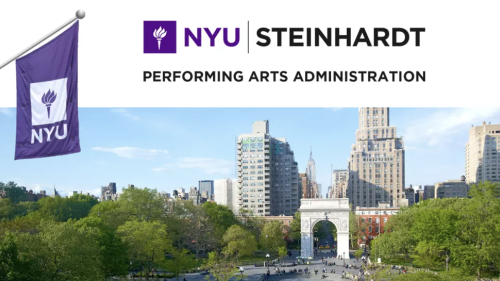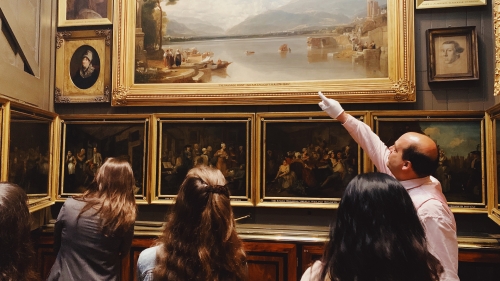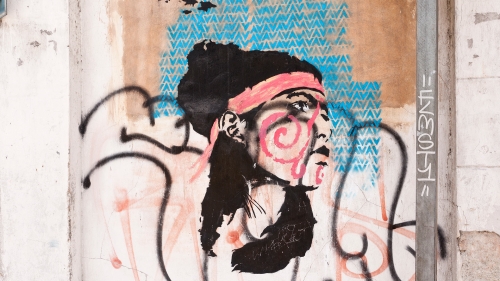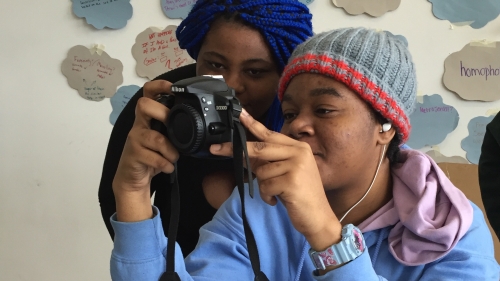A Steinhardt course comparing the creative sectors in the US and the UK takes advantage of NYU’s London hub to give students hands-on experience in arts administration.
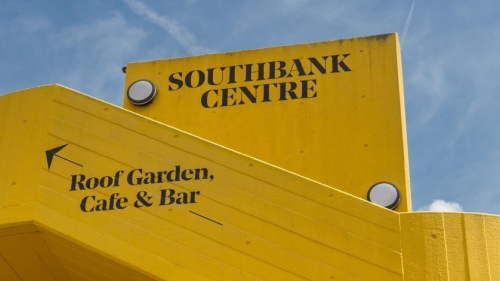
The Southbank Centre in London is one of many cultural sites on the course itinerary.
Thanks to the Tate Modern, the Old Globe, and dozens of galleries and clubs, London draws millions of visitors every year, making it one of the cultural capitals of the world. Building on this reputation, the United Kingdom was one of the first countries to recognize the economic potential of its creative sector. By combining cutting edge enterprises such as gaming, fashion, and design with classical music, dance, and museums, UK leaders leveraged the economic muscle of the arts and positioned them as a contributor to a healthy society.
“Some think of the arts as takers – they are always asking for something. UK leaders flipped it around and said the arts are actually givers, generating a huge amount of product and profit,” says Richard Maloney, clinical associate professor and director of the Performing Arts Administration graduate program at NYU’s Steinhardt School of Culture, Education, and Human Development.
That groundbreaking approach has been examined, and replicated, around the world, Maloney says. It serves as an important case study for this graduate course, which combines traditional classroom instruction with a week-long visit to London, where students learn first-hand how the city’s world-class cultural organizations operate.
You want to see the buildings, feel the spaces, feel the energy, see the artwork.
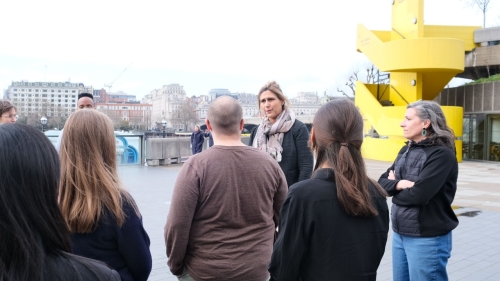
Sunita Pandya, a former executive of Southbank Centre, talks to students during their visit to the center. Photo by Mia Zhou.
Offered in the Spring, The Creative and Cultural Industries in the US and UK discusses the various governmental approaches to funding arts, as well as their influence on a country’s economy, tourism, and diplomacy. It typically attracts students from performing arts administration, visual arts administration, public policy, international education, and media and communications, Maloney says.
Maloney begins by sketching out the significance of the UK’s support of arts and its rejection of older classifications, such as fine vs. popular art, and profit vs. nonprofit structures. This approach redefines the sector as inclusive of all kinds of vibrant creativity.
“Breaking down the barriers makes sense for musicians, dancers, and artists. One day they’re playing in a chamber music concert at a small concert hall sponsored by the government and the next they are in a recording studio making the soundtrack for another Hollywood blockbuster,” says Maloney, who is also an affiliated faculty member of the Wagner Graduate School of Public Service. “They’re getting a paycheck. They don't care if it's nonprofit or for profit.”
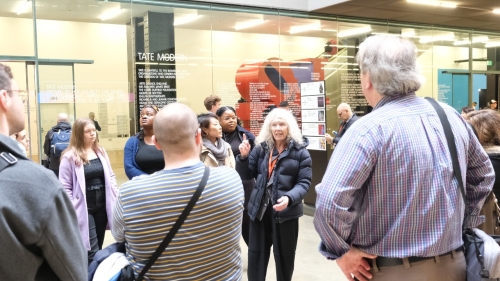
Dr. Sylvia Lahav, a teacher and veteran museum leader, with students at the Tate Modern in London. Photo by Mia Zhou.
The course covers the elements of the creative sector and their importance to a nation’s economy, tourism, and international diplomacy. Students choose a country and give presentations on how their governments support the arts, providing opportunities to compare and contrast other approaches.
The centerpiece of the course is the week in London during spring break.
“In situ is where you want to be. You want to see the buildings, feel the spaces, feel the energy, see the artwork,” Maloney says.
Students attend morning lectures and discussions given by arts management professors from UK universities and professionals working in UK creative industries. In the afternoons, they visit museums and arts centers, including the British Museum and the Southbank Centre, Europe’s largest arts center, and meet with leaders who are implementing the policies they previously discussed.
Maloney focuses on the evolution of the UK cultural sector, including the influences of such events as Brexit, which has adversely affected performing artists by restricting their freedom of movement. Other important topics of discussion are the role of artists in creative industries and questions of equity and inclusion.
Related Articles
Performing Arts Administration Panel Shares Steps for Internship Success
Student interns and hiring managers engaged with Performing Arts Administration students to share their insights into how to secure an internship.
Performing Arts Administration Study Abroad 2023 - London, UK
During spring break this year, students in the Performing Arts Administration, Visual Arts Administration, Media Culture and Communication, and Arts Education programs traveled to London to participate in the Creative and Cultural Industries in the US and UK course.
Grad Student Monet Takeda Shares Her Journey to Performing Arts Administration
Graduate student Monet Takeda never saw herself in Performing Arts Administration until she realized all the potential and exciting opportunities awaiting her.
Related Programs
Related Department
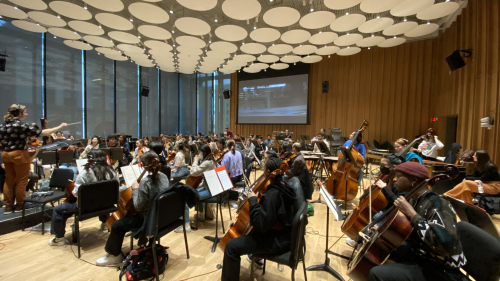
Music and Performing Arts Professions
35 W. 4th Street, 2nd Floor
New York, NY 10012
212-998-5424
mpap@nyu.edu

